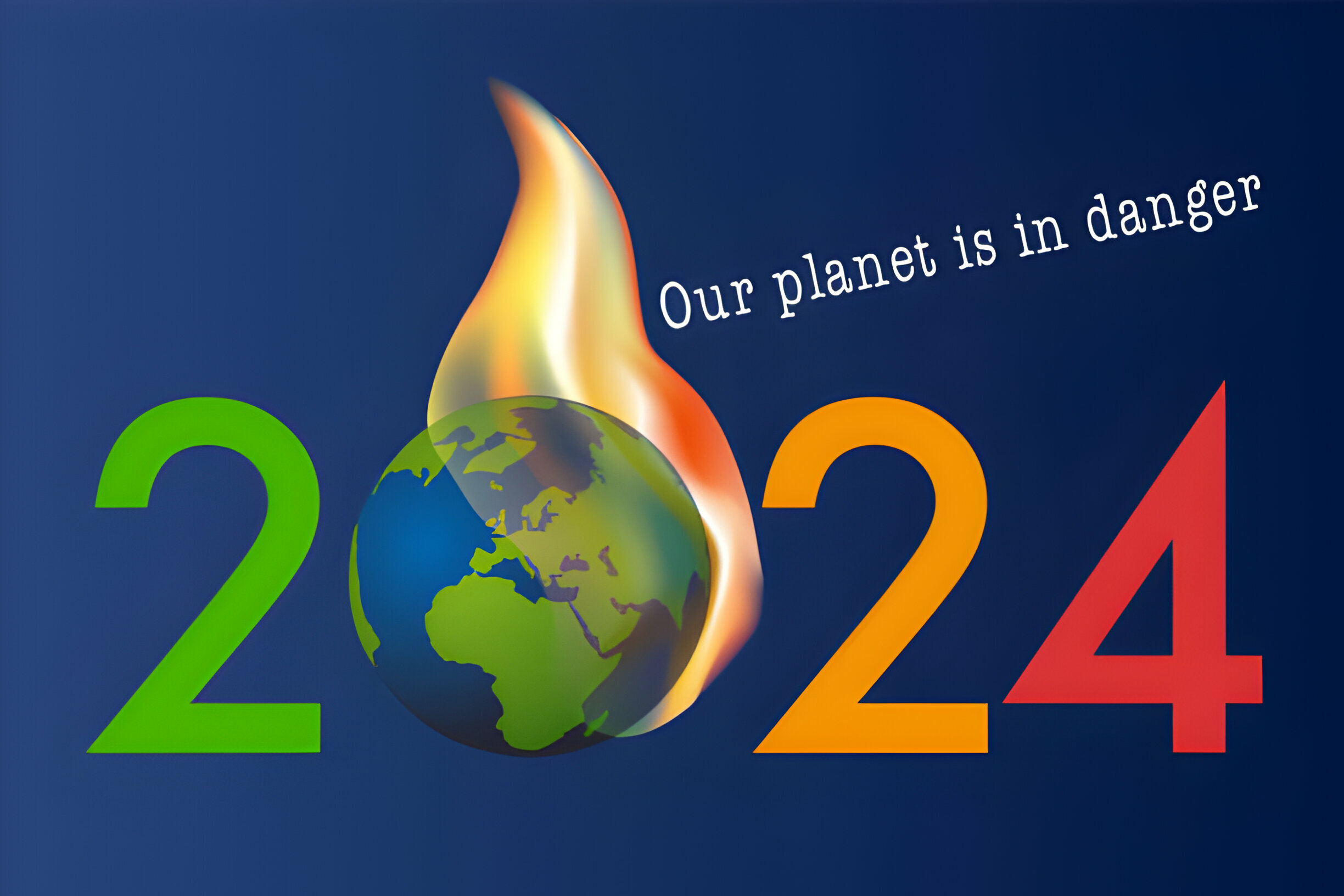Feeling the heat? Brace yourself for 2024 as record-breaking temperatures are on the horizon. El Niño’s impact and human-induced climate change are fueling this scorching trend. Prepare to navigate through a year where staying cool becomes crucial, with experts warning of extreme heat surpassing previous highs. Get ready to tackle global warming head-on as we delve into ‘Why Is It So Hot? Global Warming Predictions 2024’.
El Niño’s Influence on 2024 Temperature Trends
The current strong El Niño, starting in June and potentially peaking soon, could lead to record warmth in the first half of 2024. El Niño’s duration plays a crucial role in shaping global temperatures and weather patterns. Its atmospheric influences trigger warmer-than-average surface temperatures across the central and eastern Pacific Ocean. As this El Niño episode unfolds, it releases heat and steam into the atmosphere, affecting climate variability worldwide. Experts like Kevin Trenberth anticipate higher than normal temperatures for the initial six months of 2024 due to these atmospheric dynamics. The persistence of El Niño’s warming effect may extend well into the middle of the year, emphasizing its significant impact on global temperature trends during this period.
Predicted Heat Surge in 2024
Anticipated rise in temperatures for 2024 could surpass previous records, fueling concerns about the impact of climate change. Heatwave severity is expected to intensify due to rising trends in global temperatures. Temperature projections indicate that 2024 might exceed the heat experienced in 2023, reflecting ongoing climate variability. Weather extremes are foreseen as a consequence of these escalating temperatures, highlighting the urgency for action to address human-induced climate change. The scientific community is on high alert for the potential record-breaking warmth anticipated in 2024. As we approach this period, it becomes increasingly crucial to understand and mitigate the implications of these projected temperature surges on our environment and daily lives.
Link Between Climate Change and Rising Temperatures
As you delve into the connection between climate change and increasing temperatures, remember to consider the long-term impacts on our planet. Climate models project alarming temperature increases due to carbon emissions. These projections indicate a rise in heatwave severity, exacerbating environmental impacts globally. The link between rising temperatures and human-induced climate change is undeniable, with past data reflecting a worrying trend. To combat this issue, urgent action is required to mitigate the effects of carbon emissions on our environment. By understanding these temperature projections and their implications, we can work towards a more sustainable future for generations to come.
| Climate Models | Temperature Projections | Heatwave Severity |
|---|---|---|
| Environmental Impact | Carbon Emissions |
Greenhouse Gases and Global Warming Trends
Explore how greenhouse gases contribute to the ongoing trend of increasing temperatures globally, impacting climate patterns and environmental stability. Greenhouse gas emissions from human activities like fossil fuel burning elevate atmospheric concentrations, leading to global warming. These rising temperatures are linked to various temperature projections showing an alarming increase compared to pre-industrial levels. Climate variability is exacerbated by these changes, affecting weather patterns and environmental stability worldwide. The environmental impact of escalating temperatures is evident in extreme weather events and shifts in climate behavior. Understanding the role of greenhouse gases in driving global warming trends is crucial for addressing the urgent need to mitigate human-induced climate change and its far-reaching consequences on our planet’s ecosystems.
Historical Temperature Records and Climate Change
You need to understand the impact of historical temperature records on climate change and how they reflect the progression of global warming over time. By examining temperature anomalies, historical trends, climate variability, extreme heat occurrences, and environmental impacts, you can grasp the severity and urgency of addressing climate change.
| Historical Temperature Records | Impact on Climate Change |
|---|---|
| Rising temperatures | Reflect global warming |
| Increased frequency of heatwaves | Highlight climate variability |
| Record-breaking high temperatures | Showcase extreme heat events |
| Long-term temperature trends | Indicate environmental impacts |
| Correlation with greenhouse gas emissions | Demonstrate human influence |
Analyzing these factors reveals the significant role historical temperature records play in understanding the ongoing climate crisis and the pressing need for sustainable actions to combat it.
Expert Forecasts for 2024 Heatwave
The current strong El Niño could result in record warmth during the first half of 2024. Heatwave dynamics are being closely monitored as experts predict temperatures exceeding those of 2023. Climate models indicate a potential peak in heat around February, with weather extremes likely to follow. Expert opinions, such as Kevin Trenberth’s, anticipate higher than normal temperatures for the first six months of 2024 due to El Niño’s influence. Uncertainty looms beyond mid-2024 regarding temperature trends post-El Niño, emphasizing the complexity climate change adds to predictions. The persistence of El Niño’s effects on global climate and continued warming across the Pacific will heavily impact temperature patterns, making it crucial to stay informed about evolving climate dynamics.
El Niño’s Impact on Global Temperatures
As we delve into El Niño’s Impact on Global Temperatures, you’ll find that oceanic warming plays a vital role in shaping atmospheric circulation and influencing weather patterns worldwide. This phenomenon leads to climate variability and temperature anomalies that can significantly impact global temperatures. With the current strong El Niño event underway since June, the associated oceanic warming is expected to persist, releasing heat and steam into the atmosphere. The warmth generated by El Niño not only affects regional climates but also contributes to predictability in global weather patterns. As this powerful El Niño continues to influence our environment, its effects on temperature extremes are likely to be felt well beyond 2024, highlighting the long-lasting impact of this natural climate driver.
Potential Record Warmth in Early 2024
Entering the first half of 2024, brace for potential record warmth attributed to the ongoing strong El Niño event. Seasonal variations might intensify due to atmospheric dynamics influenced by El Niño’s effects on oceanic influences. Climatic patterns are expected to show significant deviations, with temperature anomalies likely reaching unprecedented levels. The heatwave forecasted for early 2024 could break records set in previous years, posing challenges for various regions worldwide. As El Niño continues its warming impact across the Pacific, global temperatures may rise substantially in the coming months. Prepare for a shift in weather patterns and heightened temperatures as El Niño’s influence persists through the first half of 2024, shaping climate trends and setting new benchmarks for warmth.
Uncertainty in Climate Trends Post-Mid-2024
Moving forward from the potential record warmth in early 2024, let’s delve into the uncertainty surrounding climate trends post-mid-2024. Climate modeling and long-term projections play a crucial role in understanding post-El Niño trends and the temperature outlook. As we navigate through this period, climate uncertainty looms large due to various factors at play. Experts rely on sophisticated models to anticipate how global temperatures might evolve beyond mid-2024 once the current El Niño event subsides. These models help in assessing potential scenarios and preparing for different outcomes based on changing climatic conditions.
| Climate Modeling | Long Term Projections | Post El Niño Trends |
|---|---|---|
| Analyzes future climate patterns | Predicts temperature changes over years | Observes weather patterns after El Niño |
Human-Caused Climate Change Effects
The impact of human-caused climate change is evident in the rise in global temperatures. Climate trends show a concerning pattern of increasing warmth, with temperature projections for 2024 anticipated to surpass previous records. Human influence through activities like fossil fuel combustion accelerates environmental impacts, leading to shifts in weather patterns and extreme events. The continuous rise in global temperatures highlights the urgency for action to mitigate the effects of climate change. As we face record-breaking heat, it becomes crucial to address greenhouse gas emissions and their contribution to escalating temperatures. Understanding the connection between human activities and environmental consequences is vital in shaping future climate trends and fostering sustainable practices.


